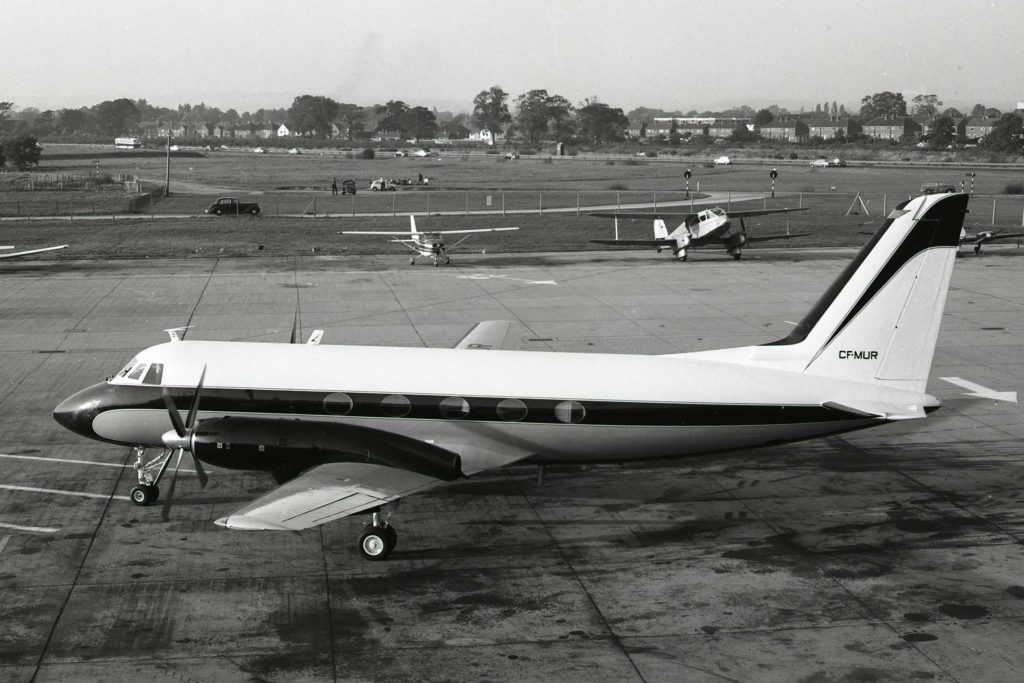Estimated reading time 5 minutes, 10 seconds.
Just as Rolls-Royce is synonymous with luxury automobiles and Feadship is considered a global leader in custom-built motor yachts, Gulfstream has long been associated with elite corporate aircraft.

With the advent of its seventh-generation models, the G500 and G600, Gulfstream will likely continue as a leading producer of large cabin business airplanes, in terms of units sold and in service. The aircraft that began this impressive legacy first flew six decades ago.
During the 1950s, the largest corporate aircraft were converted airliners and military transports such as the Douglas DC-3 and the Lockheed 18 Lodestar.
Another flight department favourite was the Grumman G-73 Mallard. The large twin-engine amphibian’s Canadian operators included Algoma Steel, Argus, Crothers, Hudson Bay Mining, Imperial Oil and Irving Oil.
These three types provided their owners with spacious living room-like interiors, as well as a ramp presence that garnered respect. As prestigious as they were, this trio had piston engines, non-pressurized cabins and limited range capabilities. They flew low and slow.
In the 1950s, the “Turbine Era” was dawning. The Vickers Viscount, powered by four Rolls-Royce Dart turboprop engines, was the world’s first turbine airliner.
It entered service in North America with Trans-Canada Air Lines in April 1955. Compared to its piston-powered predecessors, the Viscount’s quieter engines, higher cruise speed and pressurized cabin provided improved economics for its operators and an enhanced flying experience for its passengers.
Corporations took note, as did a key designer of business aircraft.
Having achieved success with the Mallard, Grumman performed market research and created an advisory committee comprised of chief pilots from major corporations.
By June 1957 the final design of a new business aircraft was completed and approval was given to start production. The Grumman G-159 Gulfstream was a pressurized low wing monoplane with a pair of Dart turboprops.
It cruised at 350 miles per hour (563 kilometres per hour) at altitudes up to 30,000 feet and could carry 12 passengers in a DC-3-sized cabin 2,200 statute miles. Fully completed, the airplane cost approximately US$1 million–about five times the price of a corporate configured DC-3.
The prototype first flew at Bethpage, N.Y., on Aug. 14, 1958 and Federal Aviation Administration (FAA) certification was awarded on May 21, 1959, only nine months later.
The first customer airplane entered service on Sept. 28, 1959. Production was soon up to three units per month and by May 31, 1960, there were 32 Gulfstreams operating with another 15 in completion centres.
The Canadian Context
When the Gulfstream debuted, the largest aircraft operated by Canadian companies were the three aforementioned piston types.
Given the distance between Canada’s major cities, a faster, more comfortable aircraft appealed to a number of corporate leaders and it didn’t take long for the first example to make its way north.
The seventh G-159 first flew on July 23, 1959, and was flown to a completion centre a week later. In mid-January 1960 it was delivered to Home Oil in Calgary, Alta.
During the next three years, Gulfstreams were delivered to George W. Crothers; Massey-Ferguson; Imperial Oil; Westcoast Transmission and Algoma Steel.
During the next five decades, the Gulfstream took on numerous responsibilities with Canadian operators. As a business tool, it transported key personnel for Denison Mines, Dome Petroleum, Iron Ore Company, Noranda Mines, Northern Telecom, Petro-Canada and TransCanada PipeLines.
As more G-159s became more affordable in the secondary market, charter companies such as Air Inuit, North American Airlines and Wardair used them in remote regions to support natural resource developments.
During the 1970s, the Government of the Northwest Territories often flew its Gulfstream as far north as Alert at 80.5 degrees North latitude–only 800 kilometres from the North Pole.
With a 24-seat interior, Gulfstreams also served as scheduled airliners with Air Sask (La Ronge Aviation) in Saskatchewan; City Express in Ontario and Quebec; and First Air (Bradley Air Services) in the western Arctic.
The type also proved to be useful as cargo carriers and flew nocturnal missions as package couriers with Airwave Transport and Kelowna Flightcraft.
One airframe was outfitted with exotic electronics that enabled it to do remote sensing, aerial photography and geophysical surveys.
Between 1958 and 1969, 200 Gulfstreams were built. Of those, 25 served with Canadian operators in a wide variety of roles.
Today fewer than a dozen G-159s remain airworthy. The sole Canadian example is C-FAWE, owned by Propair Inc. of Rouyn-Noranda, Que. Although it was retired two years ago, it would be wonderful to see this elegant matriarch of a legendary family once again in Canadian skies.